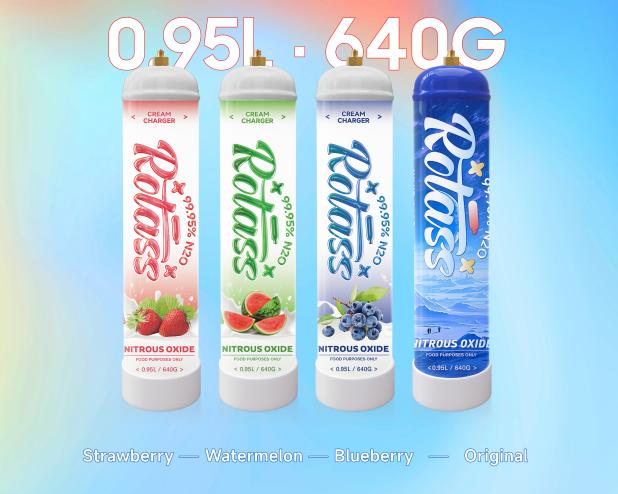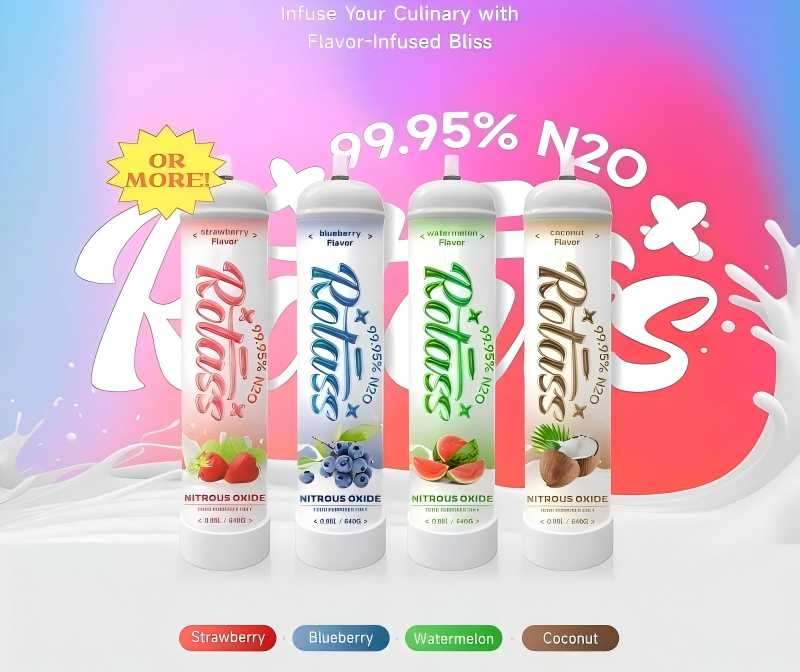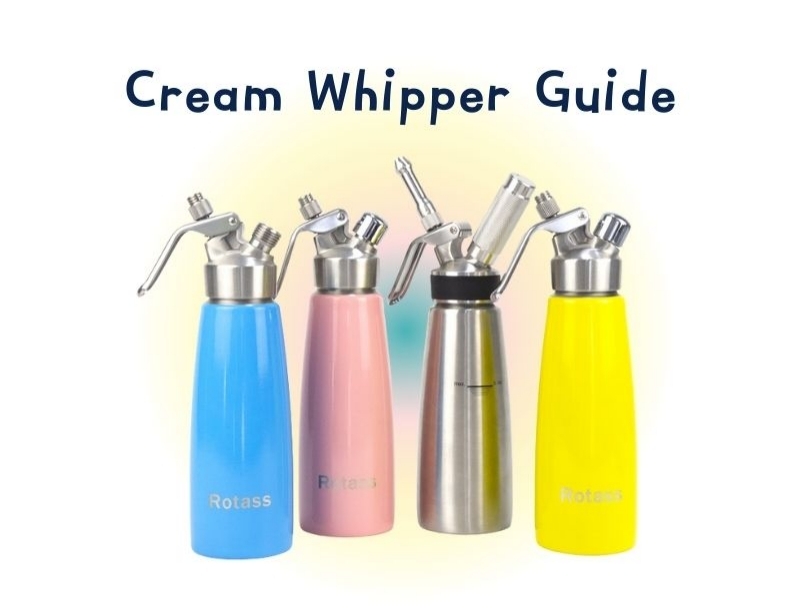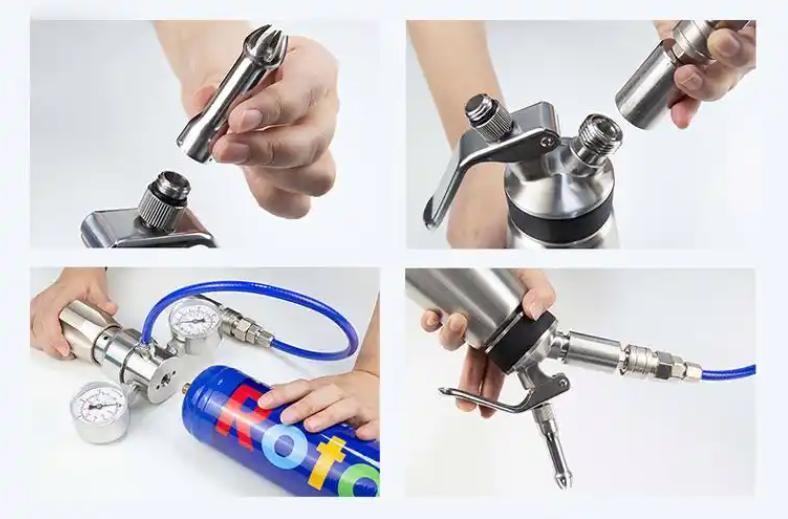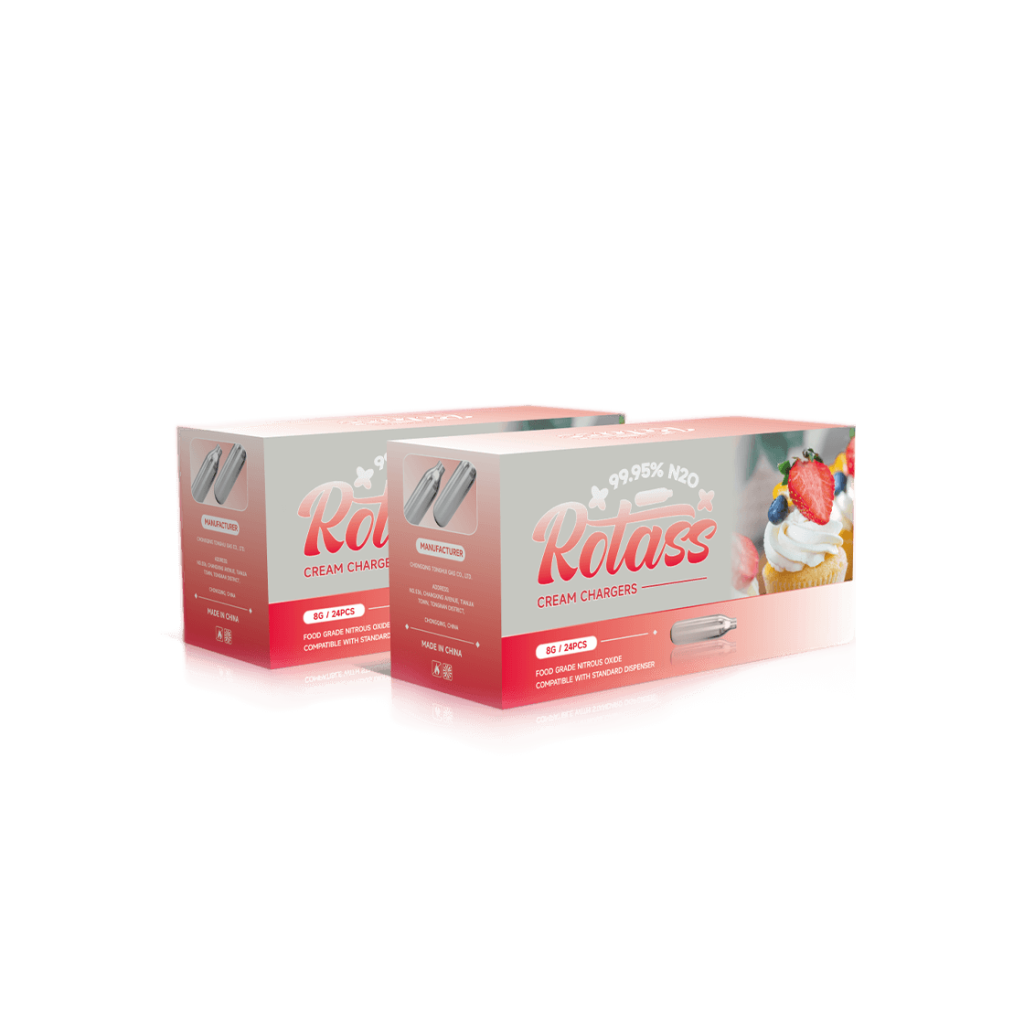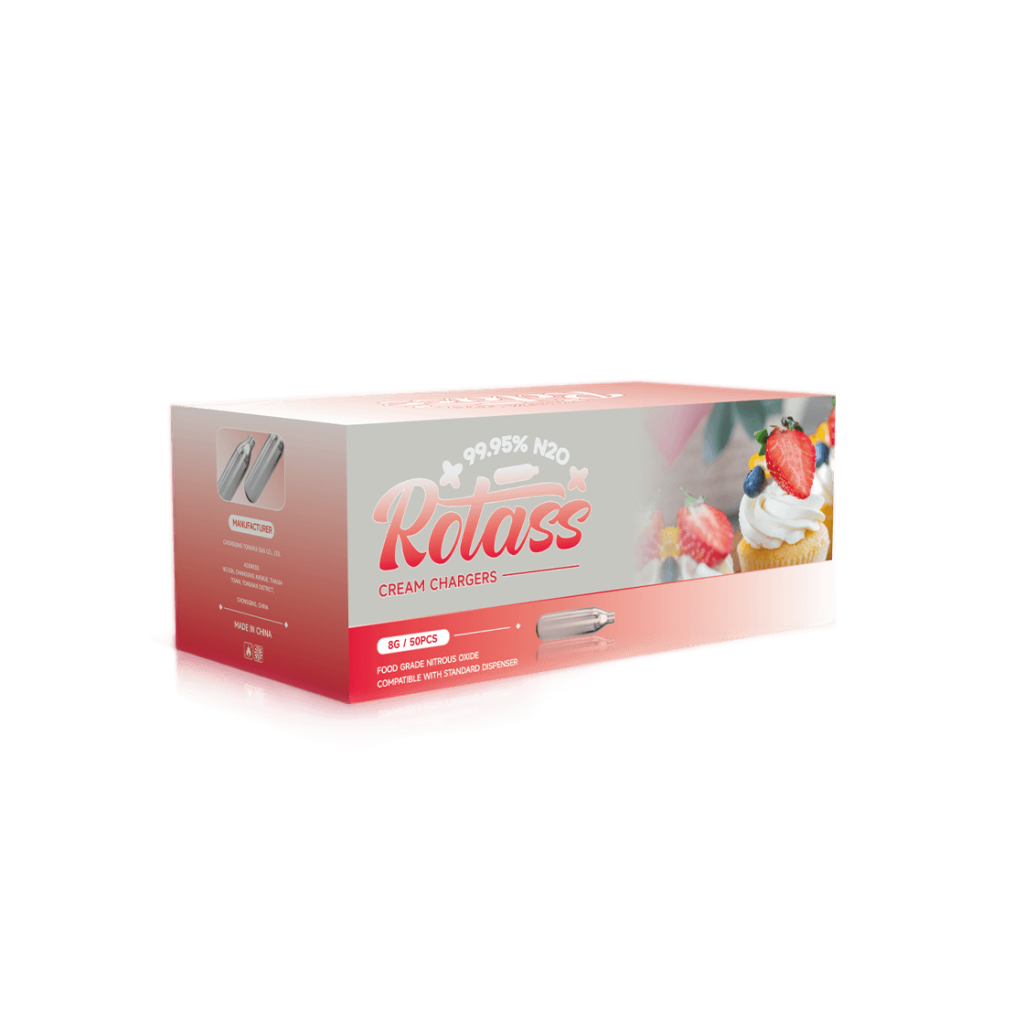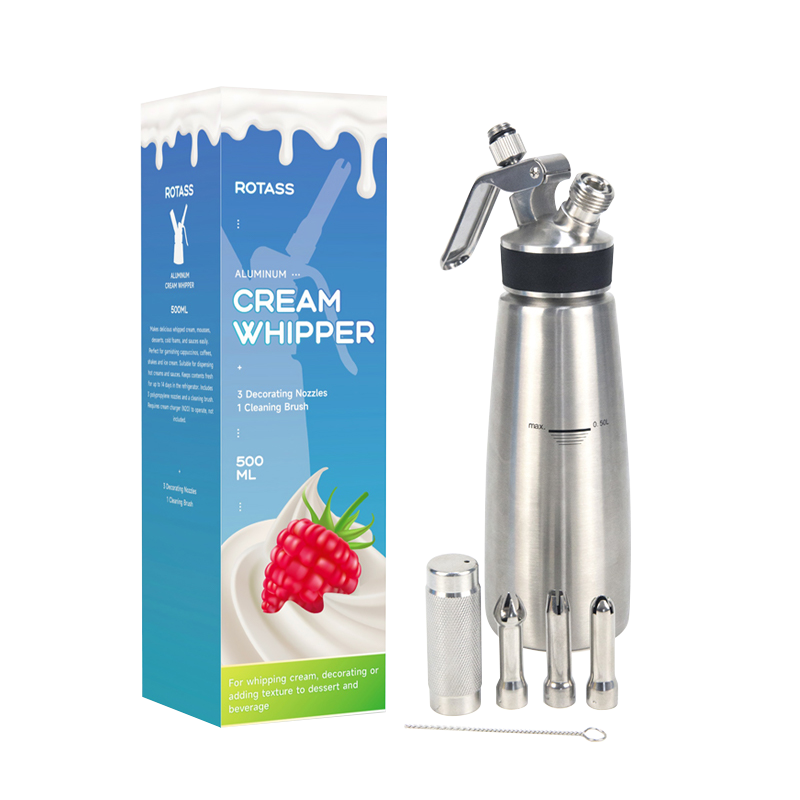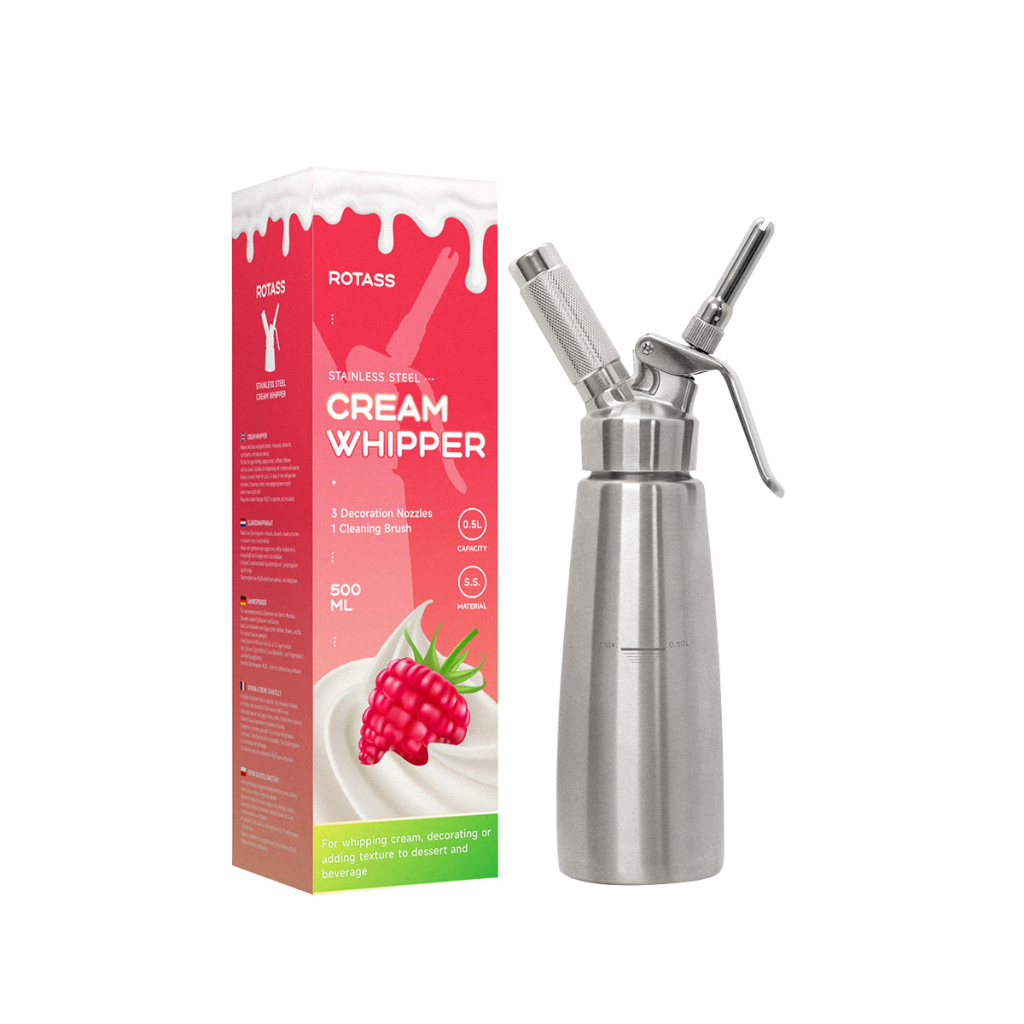2024 / 09 / 09
Perfect Whipped Cream with Pressure Regulators
Table of Contents
Whipped cream, a beloved topping for countless desserts and beverages, requires precision and care to achieve the ideal texture and flavor. While traditional methods often rely on manual whipping, the advent of N2O pressure regulators has revolutionized the process, providing a more efficient, consistent, and reliable approach. Rotass explores the synergistic benefits of N2O pressure regulators and cream dispensers, offering valuable tips and precautions for achieving the perfect whipped cream.

The Synergistic Benefits of N2O Pressure Regulators and Cream Dispensers
Nitrous oxide (N2O), commonly known as laughing gas, is a versatile gas with applications spanning from medical and food processing to rocket propulsion. In the food industry, N2O is frequently used as a propellant for whipping cream or as a packaging gas to extend shelf life and enhance the texture of food products. A crucial component in this process is the N2O pressure regulator, which ensures a stable and consistent gas supply during delivery and use.
- Cream dispensers, on the other hand, are specialized tools designed to transform liquid cream into a delicate foam through the application of pressure. By utilizing the pressurized N2O, these dispensers force the cream through a nozzle, creating a smooth and airy foam that is ideal for cake decorating and other culinary applications.
- The combination of an N2O pressure regulator and a cream dispenser offers several significant advantages:
- Consistent and High-Quality Foam: By maintaining a precise and steady pressure, the N2O pressure regulator ensures that the cream dispenser produces a consistent and fine-textured foam, enhancing the visual appeal and taste of the final product.
- Reduced Waste: Precise control of the N2O pressure minimizes gas wastage, leading to cost savings and a more sustainable process.
- Improved Efficiency: The efficient delivery of N2O to the cream dispenser streamlines the whipping process, increasing productivity and reducing labor costs.
- Enhanced Product Quality: The use of a pressure regulator helps maintain the quality of the whipped cream by preventing over-whipping or under-whipping.
- Versatility: The combination of these two tools can be adapted to a wide range of food applications, from simple whipped cream toppings to complex culinary creations.
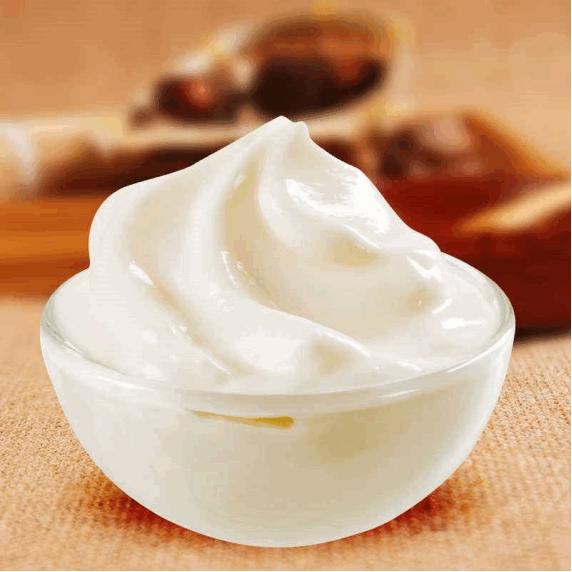
Tips and Precautions for Using N2O Pressure Regulators and Cream Dispensers
The effective use of N2O pressure regulators and cream dispensers hinges on their harmonious coordination. The pressure regulator controls the output pressure of nitrous oxide, while the cream dispenser is responsible for accurately dispensing the cream in the desired proportion and consistency.
Key Tips
- Pressure Adjustment: Before use, carefully verify that the pressure regulator is set to the correct pressure and adjust it to the appropriate range based on the requirements of the cream dispenser.
- Connection Inspection: Ensure a tight and leak-free connection between the N2O line and the cream dispenser to prevent gas leaks that could compromise the cream dispensing process.
- Temperature Control: Monitor the ambient temperature during operation, as temperature fluctuations can affect the pressure of nitrous oxide and consequently impact the quality of the cream dispensing.
- Operational Sequence: Before dispensing cream, gently open the valve of the N2O pressure regulator to allow gas to flow slowly into the dispenser. This prevents the cream from being forcefully expelled due to sudden pressure changes.
Important Precautions
- Safety First: Operators should wear appropriate protective equipment, such as explosion-proof gloves and safety goggles, to ensure safe operation.
- Equipment Inspection: Inspect the equipment before and after each use to identify any leaks, damage, or other issues, and perform necessary maintenance promptly.
- Environmental Requirements: Ensure that the operating area is well-ventilated to prevent the accumulation of nitrous oxide, which can create an explosion hazard. The operating area should also be kept away from heat sources and open flames to prevent fire hazards.
- Adherence to Procedures: Strictly follow operating procedures. If you are uncertain about any step, stop immediately and seek professional guidance.
- Record Keeping: Maintain detailed records of each operation, including the process and results, to facilitate future tracking and analysis, and to continuously improve operational efficiency and safety.
- Training and Qualifications: Operators should receive professional training and hold the appropriate certifications. They should also be knowledgeable about safety procedures and emergency response measures.
By following these tips and precautions, operators can ensure the safe and efficient use of N2O pressure regulators and cream dispensers. It is essential to adapt these guidelines to specific operational conditions and to always prioritize safety and product quality.
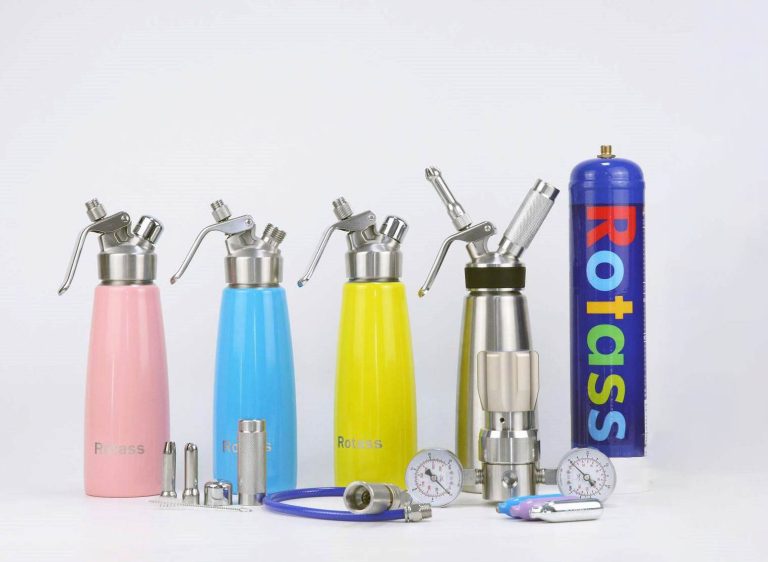
Preparing Your Cream for the Perfect Whipped Topping
Proper preparation is essential for achieving the best results when using a cream dispenser. By following these steps, you can ensure that your whipped cream is fresh, flavorful, and holds its shape.
Preparation Steps
- Refrigerate the Cream: Chill the cream in the refrigerator at a temperature between 39°F and 46°F (4-8°C) for at least 12 hours to ensure it is thoroughly chilled from the inside out.
- Prepare an Ice Bath: Place a bowl of ice water nearby. During the whipping process, set the container holding the cream in the ice bath. This helps maintain a low temperature and prevents the cream from warming up too quickly, which can affect its quality.
- Clean Your Equipment: Ensure that all tools, including the mixing bowl, whisk, and spatula, are clean and chilled. Cold tools help prevent the cream from warming up prematurely.
- Choose the Right Cream: Opt for heavy cream with a fat content of 35% or higher. Heavier cream whips up more easily and produces a richer, more stable topping.
- Control the Room Temperature: The ideal room temperature for whipping cream is below 72°F (22°C). If the room is too warm, use an air conditioner or fan to cool it down.
Whipping the Cream
- Start on Low Speed: Begin whipping the cream on low to medium speed, gradually increasing the speed as the cream thickens. This helps prevent splattering.
- Monitor the Cream: Continuously observe the cream as it whips. Adjust the speed of your mixer as needed to achieve the desired consistency.
- Avoid Overbeating: Overbeating can cause the cream to become dry and grainy. Stop whipping when the cream forms soft peaks and holds its shape when the beaters are lifted.
Storage and Preservation
- Seal and Refrigerate: Transfer the whipped cream to an airtight container or resealable bag and refrigerate immediately.
- Prevent Contamination: Use clean utensils to scoop out the whipped cream and avoid direct contact with your hands. This helps maintain its freshness and prevent contamination.
In conclusion, N2O pressure regulators have transformed the way we create whipped cream, offering a superior alternative to traditional methods. By understanding the synergistic benefits of these devices and following the essential tips and precautions outlined by N2O pressure regulator supplier Rotass you can consistently produce high-quality whipped cream that enhances the flavor and presentation of your desserts.

